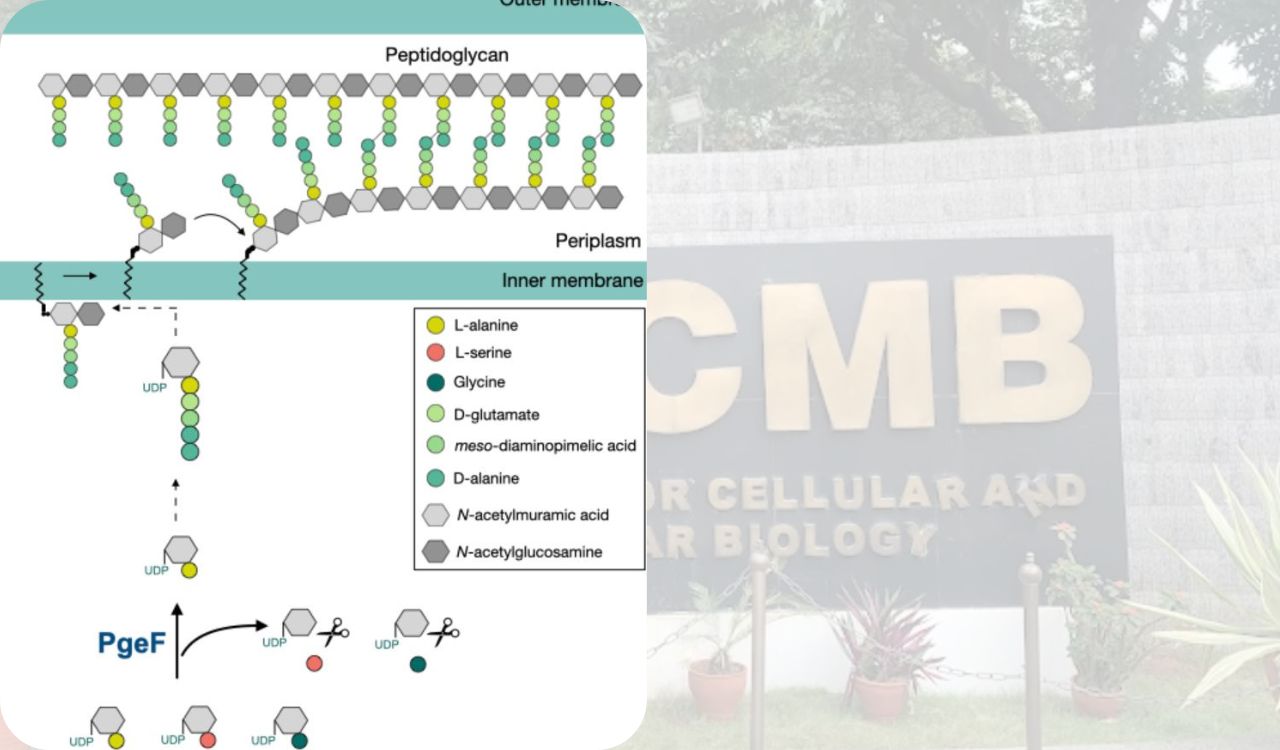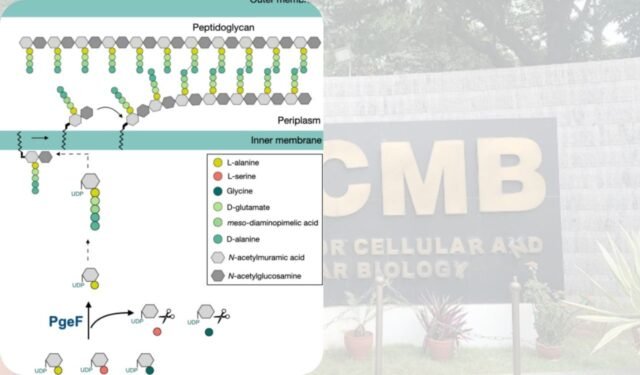A research team led by Dr. Manjula Reddy at Hyderabad’s Centre for Cellular and Molecular Biology (CCMB) has discovered a crucial proofreading mechanism in bacteria that helps maintain the strength of their cell walls.
Published Date – 23 July 2025, 08:13 PM

Hyderabad: A team of scientists led by Dr Manjula Reddy at Hyderabad-based Centre for Cellular and Molecular Biology (CCMB) has discovered a novel proofreading step that ensures the strength and integrity of the bacterial cell wall.
The findings, published in July, 2025 in the PNAS journal, show that while building the cell wall, bacteria can mistakenly add structurally similar amino acids such as L-serine or glycine instead of L-alanine, weakening the cell wall and making bacteria more vulnerable to antibiotics, a CCMB press release said.
Bacteria are enclosed by protective cell walls which are made up of a unique polymer called peptidoglycan, which is absent in all other life forms including humans. This makes the peptidoglycan a key target of many clinically used antibiotics. Dr Reddy’s team found that bacteria have an enzyme, PgeF (Peptidoglycan Editing Factor).
“Using a combination of genetics and high-resolution mass-spectrometry, we could see that PgeF specifically detects and removes the wrong amino acids to maintain the composition of the cell wall,” says Dr Shambhavi Garde, the first author of the study.
This study also opens up new research questions. “What makes the discovery more intriguing is that a homolog of this enzyme is also present in vertebrates, and defects in the human enzyme, known as LACC1, are closely associated with several autoinflammatory disorders,” said Dr Reddy.
The function of LACC1 is not clearly understood until now, and this study opens up a possibility of LACC1’s involvement in the immune response to bacteria, leading to potential therapeutic strategies in the future.








